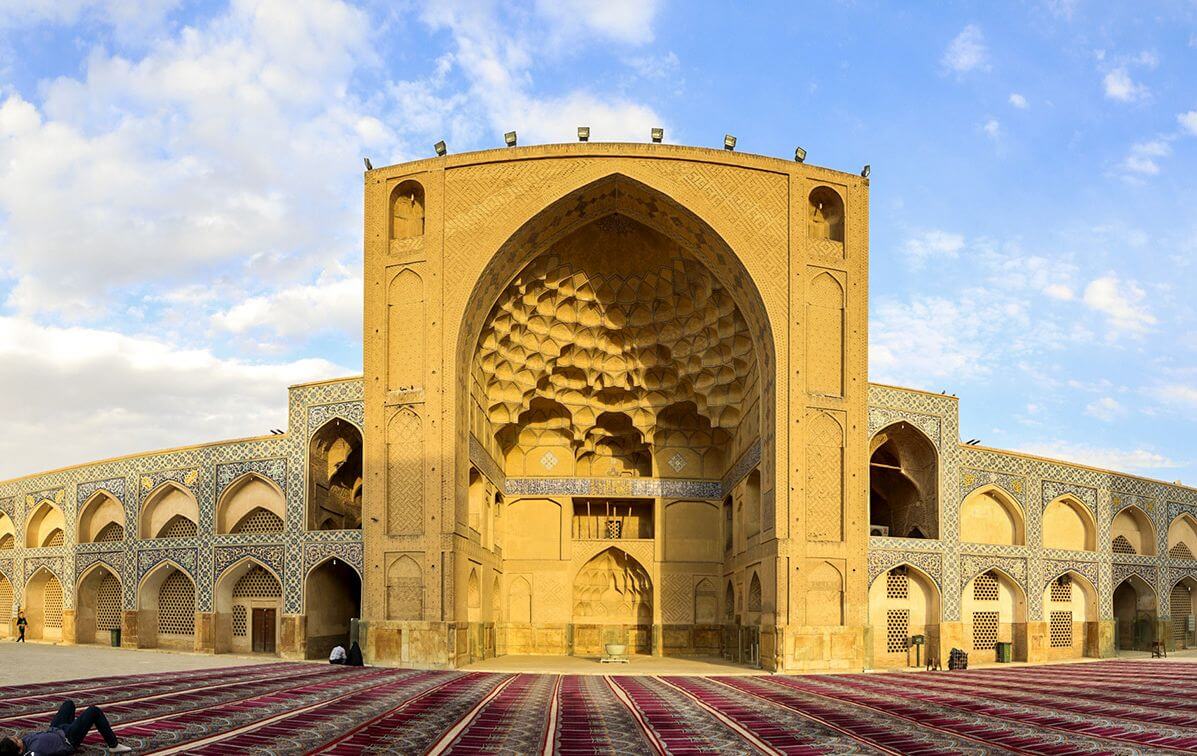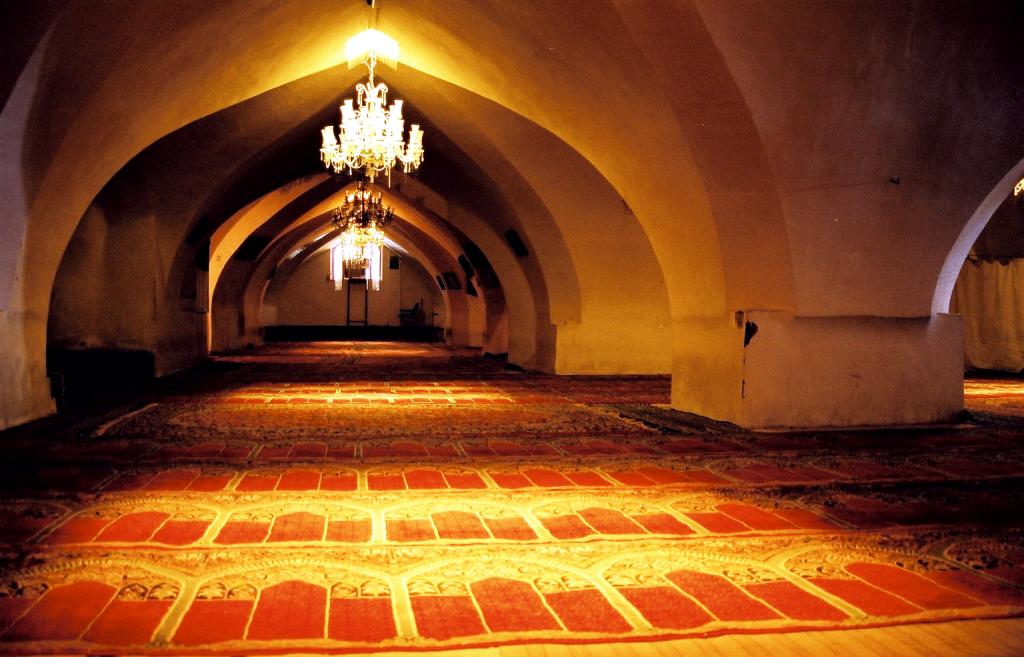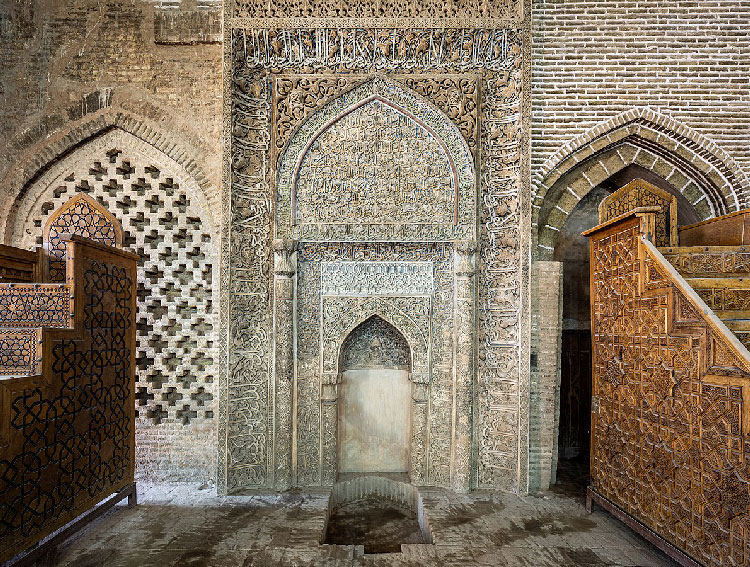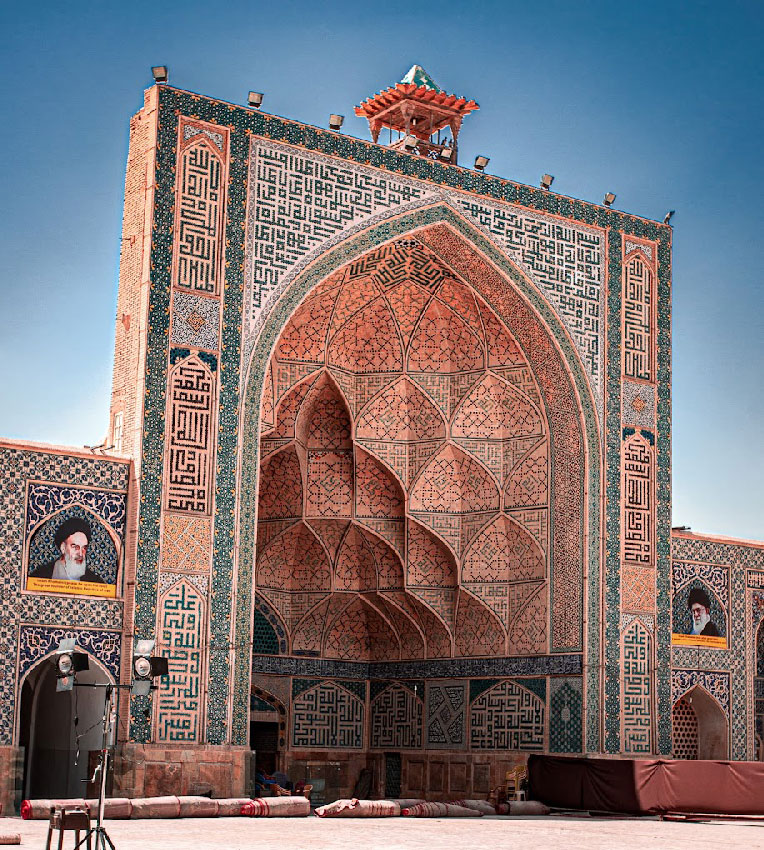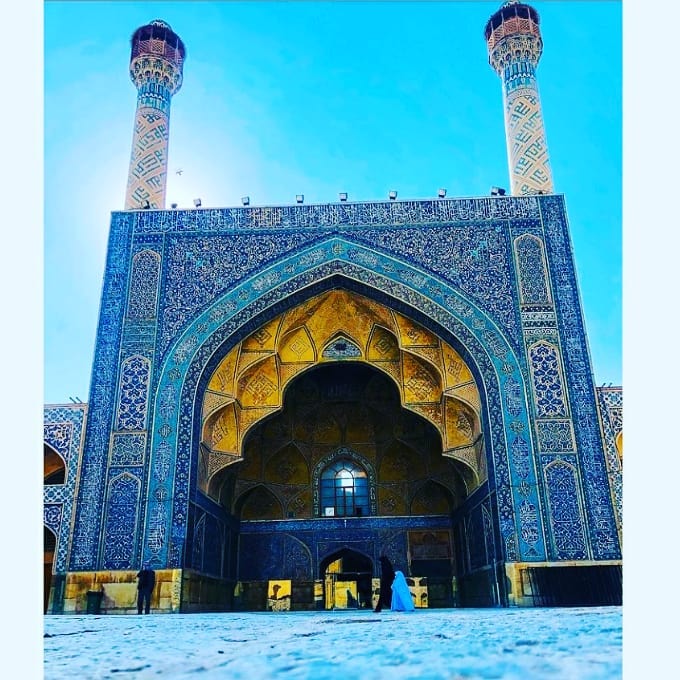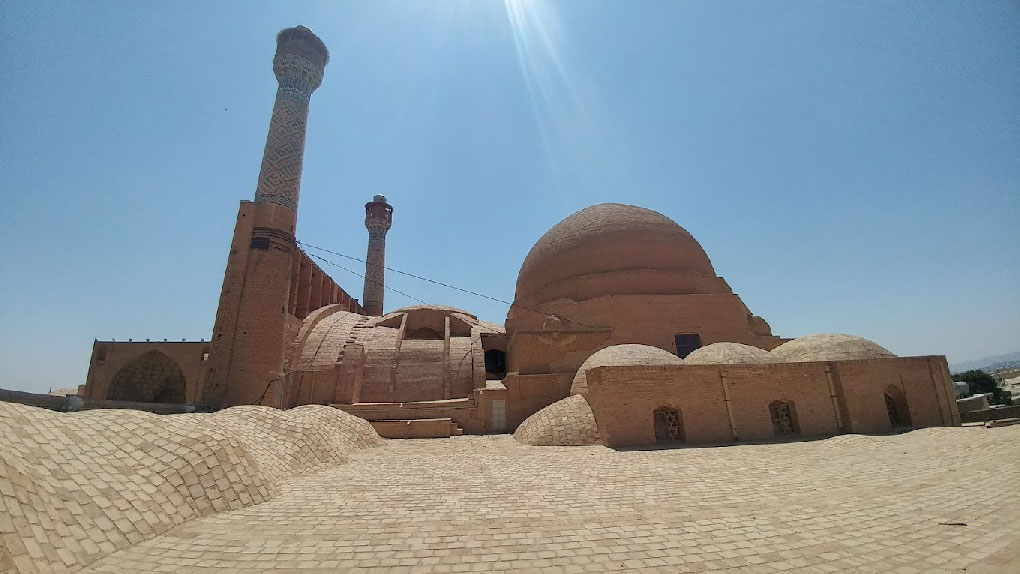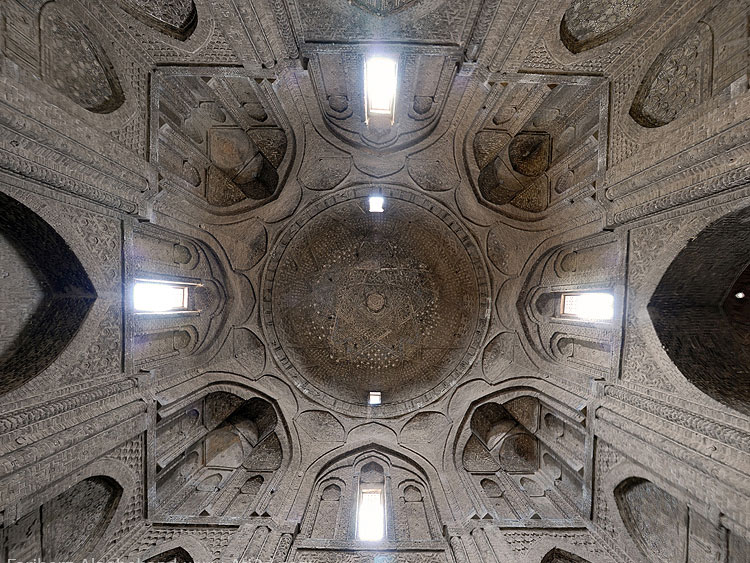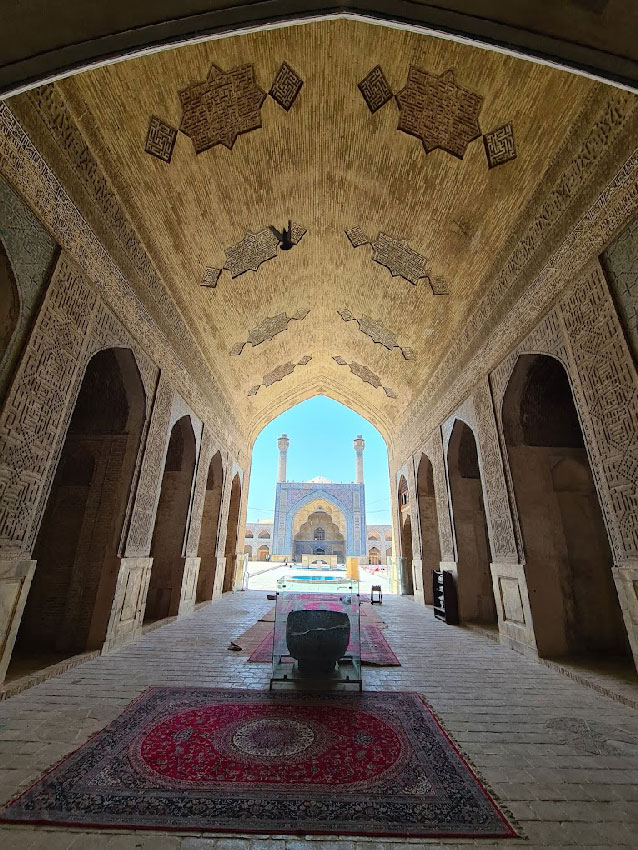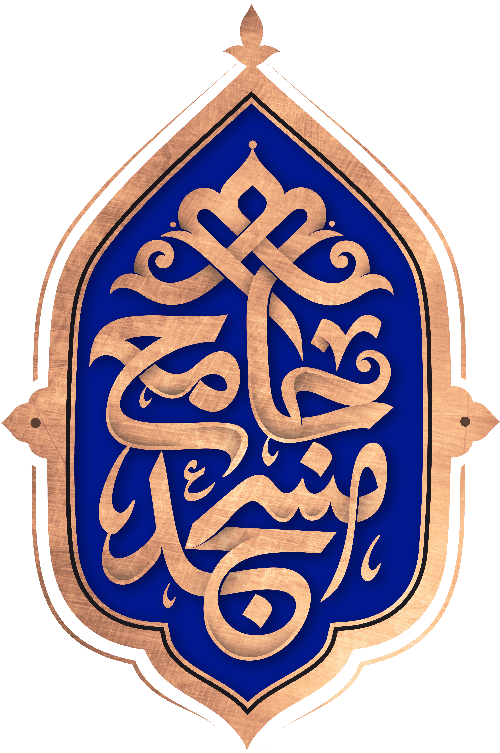Isfahan Grand Mosque has experienced important changes in its structure and appearance during the 12 centuries, which had a significant impact on its evolution. These changes are from different historical periods, including the 2nd to 4th century AH, the 3rd century AH, the 5th century AH and the 6th and 7th centuries.
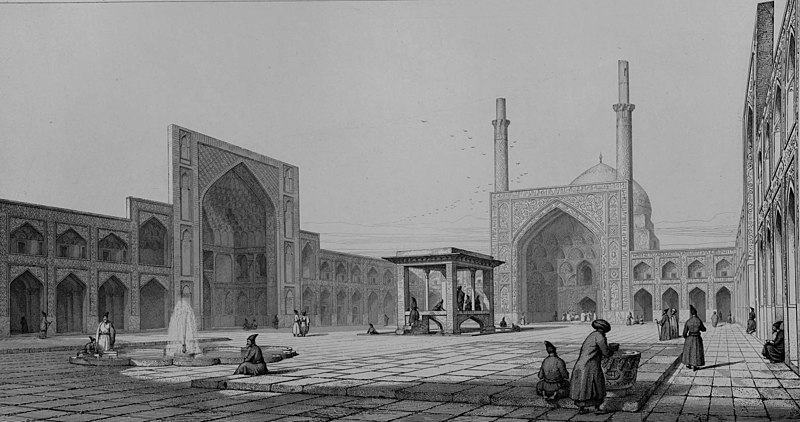
2nd to 4th century A.H.: The formation of the city and the first Islamic building
During the 2nd to 4th century A.H., with the formation of the city of Isfahan, Jame Mosque was also created. In 156 A.H., a Khorasani-style mosque was built in the northwest of central square of Isfahan, which was probably built on the remains of a fire temple. This simple building was destroyed over time and changes were made in the structure of the mosque.
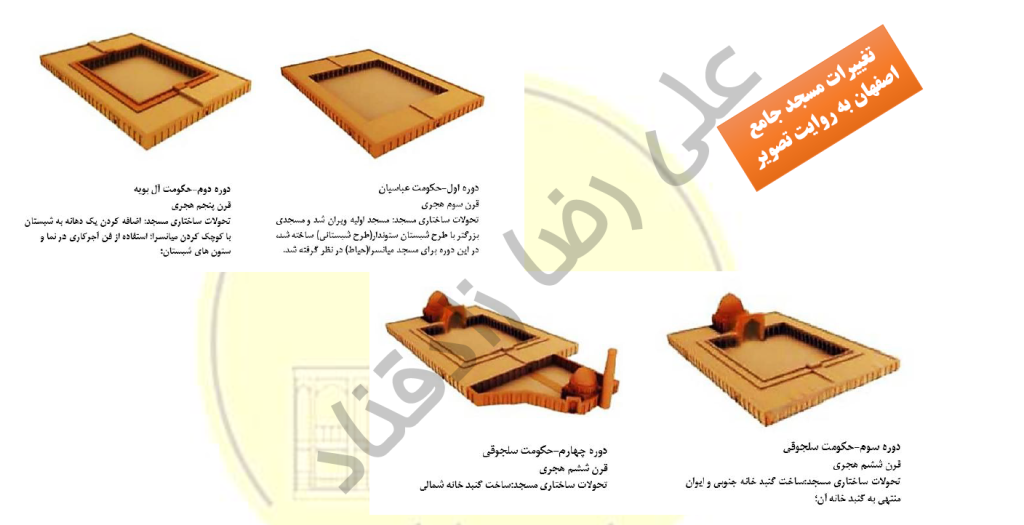
3rd century AH: structural changes and development of the mosque
During this period, with the increase in the population of the city and the needs of the people, changes were made in the structure of the Grand Mosque. During the time of Mo’tasim in 226 AH, the previous mosque was destroyed, and a new Khorasani-style mosque was built with a larger area and changes in the direction of the Qibla and the creation of chapels and a library.
5th century AH: further development and change of architectural style
In this period, with the development of the city of Isfahan and the use of the Seljuk dynasty, great changes occurred in the Jame Mosque. New iwans and domes were created in Razi style and the mosque became a four-ivan structure.
Sixth and seventh centuries: Collapse and restoration after fire
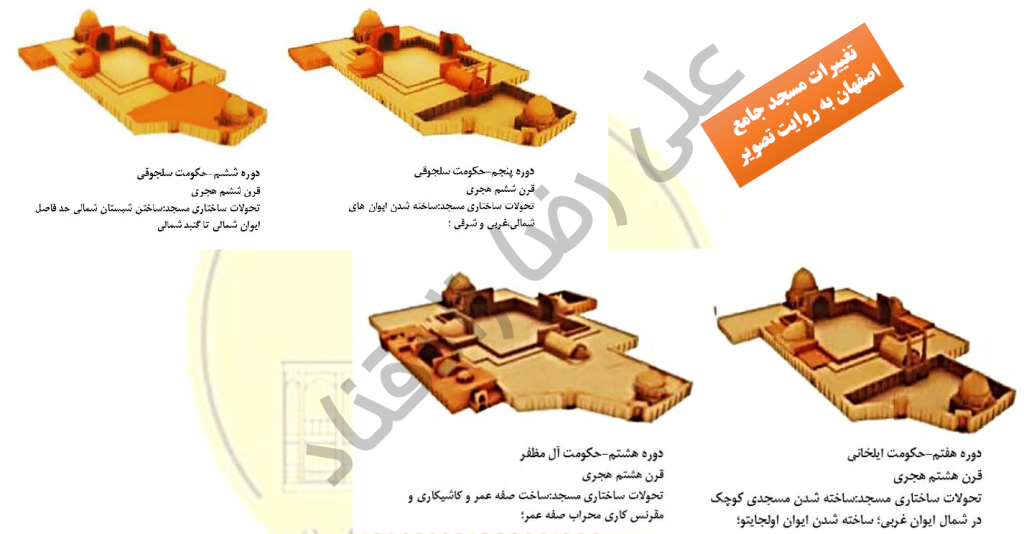
After the death of Malek Shah, the city of Isfahan was faced with rivalries and conflicts of successors and religious disputes. These factors weakened the glory of the city. Then in 515 A.H., the Ismailis set fire to the mosque and its library, and the building was destroyed.
Repair after fire: Reconstruction and creation of new structures
After the fire, the restoration and reconstruction of the mosque began. Quadruple porches and columns were created in Razi style. These changes gave new life to the mosque and added beauty and new architectural tools to it.
8th and 9th century AH
In the period of the 8th and 9th centuries AH, during the rule of Ghazan Khan and Al-Jaito, measures were taken to rebuild and develop the city of Isfahan. This period caused significant development in the city. During this period, a mihrab was built in the western part of the mosque, which became the most beautiful mihrab of the Ilkhanid era by using the art of plastering and calligraphy. Also, in front of the mentioned altar, there was a nave with numerous columns, with roots dating back to the 3rd century AH. In the next half century, this nave was destroyed and turned into a columnless space. But in later periods, the remaining columns from past periods were discovered under this space. In this period, arches and arches were built with special designs, and this new facade was created with new arches and arches that were not seen in previous historical periods.
10th to 13th century
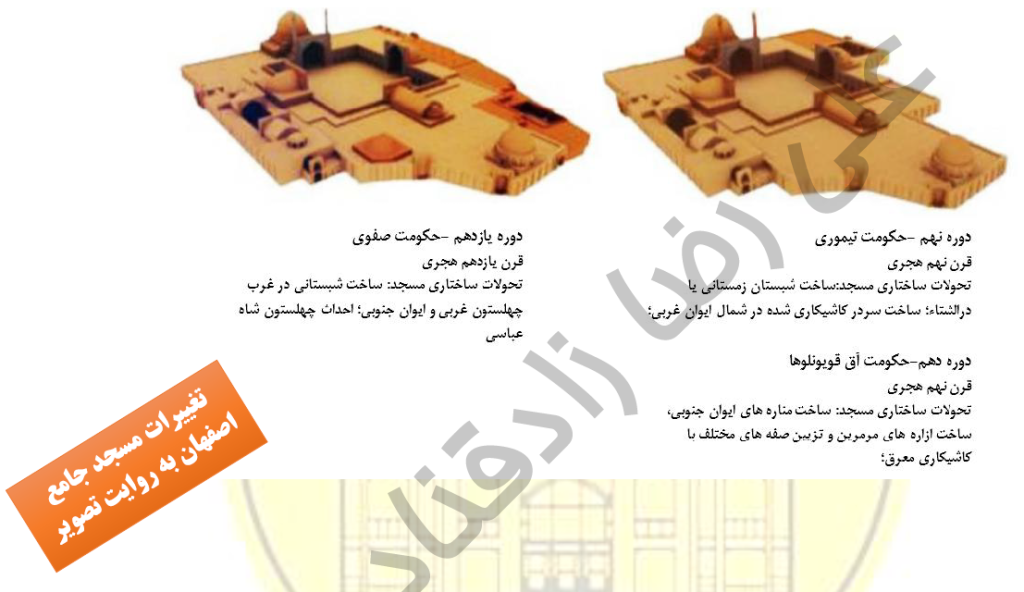
Mozaffarian period and its effect on the mosque
After the period of the Ilkhans, the government came under the hands of Mozafarians. They gained a lot of power in the cities of Yazd, Shiraz, Isfahan and Kerman. During this period, the mosque was also given special attention and important measures such as the construction of schools and mosques were carried out.
Changes in the Timurid period
After the Ilkhans, when the government came to the hands of locals like Al-Muzaffar and Al-Inju, the city of Isfahan lost its prosperity. During the Timurid period, changes took place in the mosque. For example, a new shrine was formed in the southwest and a connection was established with the previous shrine. This new nave was decorated with arches and trinkets created by hammering.
Safavid era and new changes
During the Safavid era, important changes took place in the mosque. Creating a suitable space for performing prayers and developing an open area for performing prayers were among the changes that were implemented. During this period, the western columns and openings of the nave were destroyed and disappeared. The eastern porch was also decorated with beautiful moqrans. Also, tiles, tablets, and inscriptions with Tholut and Nastaliq script were added to the building.
The effects of the Qajar period
During the Qajar period, due to the economic and political weakness of the country, the attention to rebuilding the mosque decreased. But during this period, changes were also made, including restorations in the eastern part of the mosque and its entrance. Also, new structures such as brick platforms were built for offering prayers.
With these descriptions, the history of the changes of the mosque in different periods is depicted. These changes range from structural changes to various decorations and additions. Different effects of governments
and the historical periods on Isfahan Mosque reveal the history and culture of this city.
14th century
At the beginning of the 14th century, attention to the preservation and restoration of the historical buildings of Isfahan increased greatly. During this period, Isfahan Grand Mosque was recognized as one of the national monuments and every year a budget is allocated from the government for its preservation and restoration. When the Ministry of Culture and Art of Isfahan decided to start the restoration of Jame Mosque, Hossein Maarif was chosen to do this work. During this period, the Mozaffari school, the eastern porch and the western minaret of the mosque were facing problems of instability. Consultation with the French architect and archaeologist who was present in Isfahan led to the repair of these parts. The main problem in these parts was the rotation of the outer edge of the porch. To solve this problem, two parallel beams were installed and continued to the end of the east porch to stop the movement of the bricks. Also, using a steel belt, the bottom of the western minaret was stabilized and its movement was prevented by pulling the tow wire in the opposite direction. Likewise, the destruction of the Mozaffari school was prevented by creating back braces and installing wire ropes. The tiles of the al-Jayto nave and the external facades of the porches were also repaired. An Italian named Ismeo Galdiri, who worked under the supervision of the Italian Institute of Ismeo, established a good relationship with Iran and undertook the restoration and research of Iranian buildings. He restored various parts of Jame Mosque until 1362 AH. Galdiri states that the damage caused by moisture that entered the mosque through the roof or from the ground significantly affected the architecture of the mosque. Therefore, the roof of the mosque was reconstructed in the old thatched style and also new ventilators were installed for air conditioning.
After the Islamic revolution of Iran in 1357, the restoration process of Isfahan Jame Mosque continued with a short stop and the cultural heritage organization was established. But in 1363 AH, a bomb from an Iraqi bomber exploded in the southeast part of the mosque and caused the complete destruction of this area. This incident had effects beyond the destruction of the intended place; Because the waves produced by this explosion cause tremors
Conclusion: The long evolution of Isfahan Jame Mosque
From the time of formation in the second to the fourth century A.H. to the period of architectural style changes in the fifth century A.H. and also the reconstruction after the fire, Isfahan Grand Mosque has experienced a rich and evolutionary history. These changes are not only mistaken for structural and architectural changes, but also have cultural, social and political effects on it. As an architectural masterpiece and an allegory of the history and culture of Isfahan, this mosque is still a destination of interest for travelers and researchers.

